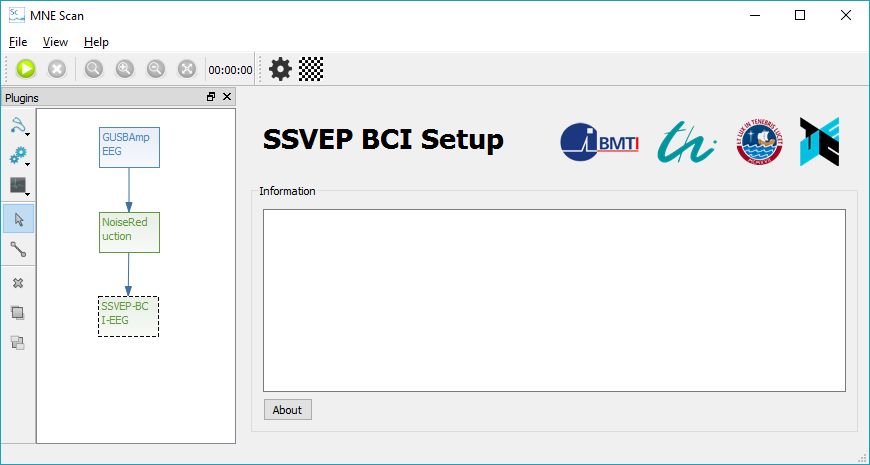Difference between revisions of "Setup SSVEP BCI example"
| Line 11: | Line 11: | ||
== Adjusting the SSVEP-BCI == | == Adjusting the SSVEP-BCI == | ||
| + | |||
| + | Like already mentioned, in the thesis "[http://opac.lbs-ilmenau.gbv.de/DB=1/SET=2/TTL=1/CMD?ACT=SRCHA&IKT=1016&SRT=YOP&TRM=Development+of+a+BCI+based+on+real-time+neural+source+localization Development of a BCI based on real-time neural source localization]" different scientific approaches are combined in order to realize this BCI. | ||
Revision as of 13:21, 27 October 2016
Abstract
The SSVEP-BCI plugin beholds a Brain Computer Interface (BCI) using Steady-State-Visual-Evoked-Potentials (SSVEP). It was developed under the Master Thesis "Development of a BCI based on real-time neural source localization", in which the so called Bremen-BCI was used as a role model in order to setup classification pipeline and visualization. This tutorial describes both the setup of the processing pipeline and usage of the SSVEP-BCI plugin.
Editing the Processing Pipeline
In the following figure an edited setup of the SSVEP-BCI processing pipeline is shown in the MNE-Scan GUI environment. For this example the NoiseReduction plugin was interposed as a preprocessing step in order to increase the Signal-to-Noise ratio. However, the SSVEP-BCI plugin can also be processed with "raw" (unfiltered) data by connecting it directly with the acquisition plugin.
Adjusting the SSVEP-BCI
Like already mentioned, in the thesis "Development of a BCI based on real-time neural source localization" different scientific approaches are combined in order to realize this BCI.
